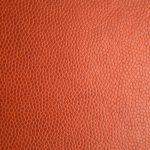When sourcing jacquard and satin fabrics from Chinese mills, you’ll find advanced technology guarantees precise weaving and rich color vibrancy at competitive prices. Jacquard fabrics offer intricate, woven-in patterns ideal for durable designs, while high-quality satin shines with smoothness and color retention. Focus on mills that provide certifications, fabric samples, and strong communication. Understanding pricing, MOQs, and shipping logistics will help you manage costs effectively. Exploring how to identify reliable suppliers will guide you further.
Table of Contents
Key Takeaways
- Verify Chinese mills’ certifications and fabric samples to ensure Jacquard and Satin quality meets your design and durability requirements.
- Use computerized looms and advanced dyeing technology mills for precise patterns and vibrant colors in Jacquard and Satin fabrics.
- Negotiate MOQs and tiered pricing with multiple mills to secure competitive rates and flexible order volumes.
- Choose suitable shipping methods (sea or air) and clarify Incoterms like FOB or CIF to manage costs and delivery expectations.
- Collaborate with reliable freight forwarders and customs brokers to handle import regulations, tariffs, and timely delivery compliance.
Understanding Jacquard Fabric and Its Applications
Jacquard fabric features intricate patterns woven directly into the material, giving it a textured and durable finish. When you choose Jacquard, you’re investing in fabric that stands out because of its complexity and strength.
You’ll find it’s perfect for upholstery, draperies, and fashion pieces that need a bit more flair and longevity. Unlike printed fabrics, the designs are part of the weave, so they won’t fade or peel over time.
You can pick from a wide range of motifs, from floral to geometric, depending on your project’s style. When sourcing Jacquard from Chinese mills, you’ll appreciate the balance they strike between quality and cost, making it easier for you to find the right fabric for your needs.
Characteristics of High-Quality Satin Fabric
Satin’s smooth surface and lustrous sheen make it instantly recognizable and highly sought after. When you look for high-quality satin fabric, focus on its weave tightness and fiber content.
True satin has a dense weave that gives it that signature glossy finish on one side and a matte back. You’ll find that satin made from silk or high-grade synthetic fibers like polyester offers durability and a soft hand feel.
True satin features a dense weave with a glossy front and matte back, crafted from silk or premium synthetics.
Check for evenness in the fabric’s surface—no snags or pulls. Also, high-quality satin drapes fluidly, enhancing its elegance in garments or upholstery.
When sourcing, verify the fabric maintains color vibrancy after washing and resists pilling. These characteristics guarantee you get satin that performs beautifully and lasts longer.
Overview of China’s Textile Industry and Its Capabilities
When you source jacquard and satin fabrics, understanding China’s vast textile industry is key.
The country combines large-scale production with advanced technology to meet diverse fabric needs. You’ll find specialized facilities that excel in producing both intricate jacquard and smooth satin materials.
Textile Industry Scale
Although China dominates global textile production, you might be surprised by the sheer scale and diversity of its industry. It spans from small workshops to massive factories, producing everything from basic cotton to luxury jacquard and satin fabrics. This vast network supports millions of workers and meets both domestic and international demand efficiently.
Here’s a quick look at key textile industry stats to give you perspective:
| Metric | Value |
|---|---|
| Number of Textile Mills | Over 60,000 |
| Annual Fabric Output | 60+ billion meters |
| Employment | Approximately 10 million |
| Export Volume | 40% of global textile exports |
| Jacquard & Satin Focus | Growing segment, specialized |
When sourcing fabrics, this scale guarantees you’ll find variety, competitive pricing, and reliable supply.
Technological Advancements
As you explore sourcing jacquard and satin fabrics, you’ll find that China’s textile industry leverages cutting-edge technology to stay ahead.
Advanced computerized looms and automated weaving machines boost precision and efficiency, ensuring intricate jacquard patterns come out flawlessly every time.
Digital printing and dyeing techniques enhance color vibrancy and consistency for satin fabrics, reducing waste and production time.
Additionally, smart manufacturing systems enable real-time monitoring and quality control, minimizing defects.
These technological advancements not only speed up production but also allow mills to customize orders to your exact specifications.
This means you get high-quality fabrics with shorter lead times and competitive pricing.
Production Specializations
Because China’s textile industry has grown so rapidly, it specializes in a wide range of production capabilities that cater to diverse fabric needs.
When sourcing Jacquard and satin fabrics, you’ll find mills equipped to handle intricate weaving techniques and fine finishes. Many factories focus on high-quality Jacquard weaving, producing complex patterns with precision.
Others excel in satin manufacturing, offering various fiber blends and sheen levels. You can also rely on mills that integrate dyeing and finishing processes, ensuring consistent color and texture.
This specialization means you can select suppliers based on your exact fabric requirements, whether you need luxury satin for fashion or durable Jacquard for upholstery.
Top Regions in China Known for Jacquard and Satin Production
You’ll find that certain regions in China specialize in producing high-quality jacquard fabrics, with major hubs like Shaoxing leading the way.
When it comes to satin, cities such as Hangzhou are known for their advanced manufacturing capabilities.
Knowing these key areas helps you source fabrics more efficiently and tap into the best production resources.
Major Jacquard Hubs
When sourcing jacquard and satin fabrics, knowing the major production hubs in China can save you time and guarantee quality.
For jacquard, the city of Shaoxing in Zhejiang province stands out as a key hub. It’s renowned for its advanced weaving technology and skilled workforce, ensuring intricate patterns and durable fabrics.
Nearby, Haining also excels, especially in producing high-end jacquard textiles with complex designs.
Additionally, Changshu in Jiangsu province is worth considering for its efficient manufacturing processes and competitive pricing.
These regions combine traditional craftsmanship with modern machinery, giving you diverse options depending on your order size and design complexity.
Focusing your search in these hubs helps you find reliable suppliers who understand jacquard’s technical demands and deliver consistent quality.
Satin Production Centers
Although jacquard dominates certain regions, satin production thrives in several key Chinese centers known for their textile expertise.
When sourcing satin, you’ll want to focus on these top areas that combine advanced technology with skilled craftsmanship. Each region offers unique advantages, ensuring you get high-quality fabrics tailored to your needs.
- Suzhou – Renowned for its rich history in silk weaving, Suzhou mills produce luxurious satin with exquisite finishes.
- Shandong – This area excels in large-scale production, offering competitive prices without compromising fabric quality.
- Guangdong – Known for innovation and fast turnaround times, Guangdong suppliers are ideal for businesses needing quick, reliable satin fabric sourcing.
Targeting these centers will streamline your sourcing process and enhance fabric quality.
Identifying Reliable Chinese Fabric Mills
Since sourcing high-quality jacquard and satin fabrics depends heavily on your supplier, identifying reliable Chinese fabric mills becomes essential.
First, verify their certifications and compliance with international standards to guarantee product quality and ethical practices.
Verify certifications and compliance with international standards to ensure quality and ethical sourcing practices.
Next, check their production capacity and technology—modern machinery often means better fabric consistency.
Don’t hesitate to ask for samples and customer references to test texture, durability, and colorfastness firsthand.
Visiting the mill or arranging a third-party inspection can give you deeper insights into their operations.
Also, evaluate their communication responsiveness and willingness to customize orders, as these factors affect your overall experience.
Comparing Fabric Quality: Jacquard vs. Satin From Chinese Suppliers
Understanding the differences in fabric quality between jacquard and satin from Chinese suppliers helps you make informed sourcing decisions.
Both fabrics have unique qualities, but knowing what to expect guarantees you get the best for your needs.
- Durability: Jacquard fabrics are generally more durable due to their woven patterns, while satin’s smooth surface can be prone to snags.
- Texture and Finish: Satin offers a glossy, smooth finish, perfect for luxury items, whereas jacquard provides a textured, intricate design that adds depth.
- Colorfastness: Chinese jacquard mills often use advanced weaving techniques enhancing color retention, while satin’s dye quality can vary, affecting vibrancy over time.
How to Request and Evaluate Fabric Samples
When you request fabric samples, be clear about the specific patterns, weights, and finishes you need to see.
Once you get the samples, check for color accuracy, texture, and durability to make sure they meet your standards.
These steps help you avoid costly mistakes before placing a larger order.
Sample Request Tips
Before you commit to a bulk order, requesting fabric samples allows you to assess texture, color accuracy, and quality firsthand. To make the most of your sample requests, be clear and specific to avoid misunderstandings.
- Specify the exact fabric type, weight, and color code to get accurate samples.
- Ask for a swatch size that’s large enough to evaluate drape and weave clearly.
- Request multiple samples if you’re comparing variations or blends.
Once you receive the samples, check them under natural light and note any discrepancies from your expectations.
Don’t hesitate to communicate with the supplier about any concerns or additional samples needed. This proactive approach saves time and guarantees you get the right fabric for your project.
Quality Assessment Criteria
Since fabric quality varies widely, you’ll want to know exactly what to look for when requesting and evaluating samples. Ask for detailed specifications, including fiber content, weight, and weave type. Once you receive samples, examine their texture, colorfastness, and durability. Testing for shrinkage and drape is also essential. Use the table below as a quick reference for key quality criteria:
| Criterion | What to Check | Why It Matters |
|---|---|---|
| Texture | Smoothness, uniformity | Affects comfort and appearance |
| Colorfastness | Resistance to fading/washing | Guarantees longevity |
| Durability | Tear and abrasion resistance | Determines lifespan |
| Shrinkage | Dimension changes after wash | Maintains garment fit |
Navigating Pricing and Minimum Order Quantities
How can you guarantee you get the best deal on jacquard and satin fabrics without overcommitting? Start by understanding the pricing structure and minimum order quantities (MOQs) set by Chinese mills. These factors directly impact your budget and inventory.
Here’s how to navigate them effectively:
- Negotiate MOQs: Don’t hesitate to ask if the mill can lower the MOQ, especially if you plan to build a long-term relationship.
- Request tiered pricing: Ask for discounts based on volume increments to see if you can save by ordering slightly more.
- Compare multiple quotes: Get pricing from several mills to identify competitive rates and verify you’re not overpaying.
Shipping and Customs Considerations for Fabric Imports
Once you’ve secured favorable pricing and manageable order quantities, the next step is to focus on shipping and customs.
Choose between sea freight for cost efficiency or air freight for speed, depending on your timeline and budget. Confirm who handles shipping costs and responsibility—Incoterms like FOB or CIF clarify this.
Prepare accurate commercial invoices and packing lists to avoid customs delays. Check your country’s import regulations for textile goods, including tariffs, duties, and required certifications.
Work closely with a reliable freight forwarder or customs broker who understands fabric imports; they’ll help navigate paperwork and compliance. Proper planning here prevents unexpected fees and guarantees your jacquard and satin fabrics arrive smoothly, ready for your production schedule.
Leveraging Trade Shows and Online Platforms to Find Suppliers
Where can you find the best jacquard and satin fabric suppliers? Trade shows and online platforms are your go-to resources. These venues offer direct access to a wide range of manufacturers, letting you compare quality and prices firsthand or through detailed listings.
Here’s how to leverage them effectively:
- Attend major trade shows like the China Import and Export Fair (Canton Fair) to meet suppliers face-to-face and examine fabric samples.
- Use online B2B platforms such as Alibaba and Global Sources to browse verified supplier catalogs and request quotes instantly.
- Participate in virtual trade fairs to connect with suppliers remotely, saving time while expanding your options.
Building Long-Term Relationships With Chinese Fabric Manufacturers
After finding reliable jacquard and satin fabric suppliers through trade shows and online platforms, your next step is to build lasting partnerships with Chinese manufacturers. Focus on clear communication, timely payments, and mutual respect to foster trust. Regular visits and cultural understanding also strengthen bonds, ensuring quality and reliability.
| Strategy | Action | Benefit |
|---|---|---|
| Transparent Communication | Share expectations clearly | Reduces misunderstandings |
| Consistent Orders | Maintain steady demand | Encourages priority handling |
| Prompt Payments | Pay invoices on time | Builds financial trust |
| Cultural Awareness | Learn local customs | Enhances relationship quality |
| Regular Visits | Schedule factory visits | Improves collaboration |
Frequently Asked Questions
What Environmental Standards Do Chinese Mills Follow for Fabric Production?
You’ll find Chinese mills often follow national environmental standards like GB/T and implement measures to reduce pollution. However, compliance varies, so you should verify each mill’s certifications and sustainability practices before sourcing fabrics.
How Can I Verify the Ethical Labor Practices of Fabric Suppliers?
How can you trust suppliers without proof? You can verify ethical labor practices by requesting certifications, conducting factory audits, and checking third-party reports. Don’t hesitate to engage directly with workers or use trusted industry watchdogs for transparency.
What Are Common Payment Terms When Dealing With Chinese Fabric Mills?
When dealing with Chinese fabric mills, you’ll often encounter payment terms like 30% upfront deposit with the balance before shipment, or letter of credit. Sometimes, full payment upfront is required, especially for new partnerships or custom orders.
Are There Any Seasonal Factors Affecting Fabric Availability in China?
You’ll find fabric availability in China can dip around Chinese New Year as mills close for holidays. Also, seasonal demand shifts production priorities, so plan ahead to avoid delays, especially during peak seasons or major festivals.
How Do Chinese Mills Handle Custom Fabric Design Requests?
You’ll find that Chinese mills typically collaborate closely with you on custom fabric designs, offering sample prototypes and adjusting details based on your feedback to guarantee the final product matches your specifications perfectly before full production begins.
- Stretch Burnout Velvet: The Perfect Blend of Comfort and Luxury - June 20, 2025
- The Richness of Green Burnout Velvet: Project Ideas and Inspiration - June 20, 2025
- A Guide to Blue Burnout Velvet in Fashion and Home Décor - June 20, 2025







